During the fall of 2024, the Historic Property Inspection Program (HPIP) had the pleasure of visiting several historic sites in Allegheny and Washington Counties in the western part of the state:
- The David Bradford House, Washington, Washington County;
- Carrie Furnaces, Swissvale, Allegheny County; and
- The Children’s Museum of Pittsburgh, Pittsburgh, Allegheny County.
These visits allowed us an opportunity to test the new Historic Property Inspection Building Condition and Assessment Form.
What is a Historic Property Inspection Building Condition and Assessment Form?
The Condition Assessment Form allows SHPO staff to evaluate the existing condition of a property and to monitor the progress of on-going maintenance and rehabilitation work. The form also provides a mechanism whereby SHPO staff can provide stewards recommendations and guidance on necessary repair or maintenance work on their historic property currently under a covenant agreement.
The form includes a list of architectural and site features that guide the evaluator in making an assessment of various building and site-related items, such as exterior and interior conditions (exterior roof system, exterior and interior windows, interior flooring, etc…); climate change and resiliency initiatives if applicable to the site; and accessibility concerns or issues, also if applicable to the site.
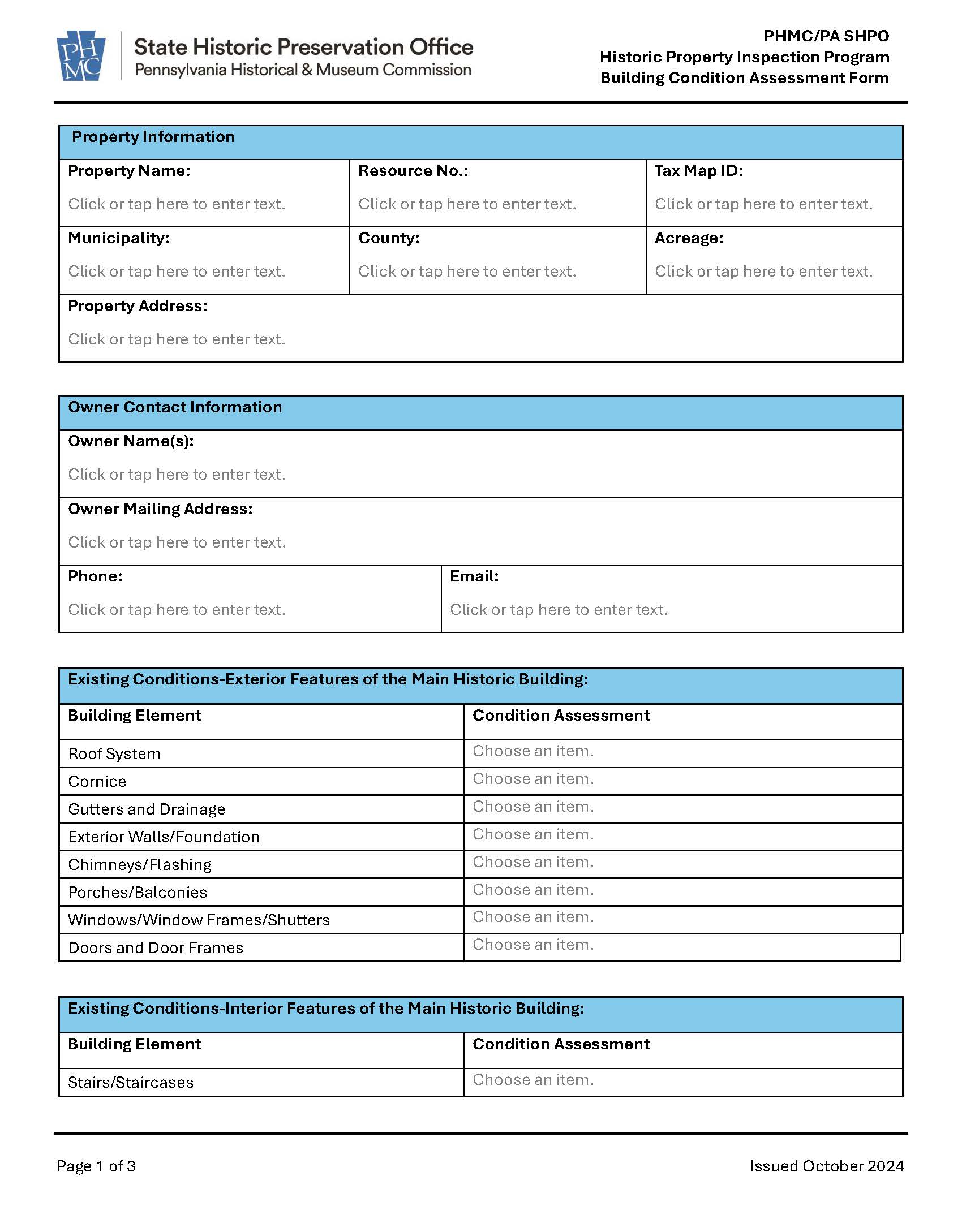
First page of PA SHPO’s building condition assessment form.
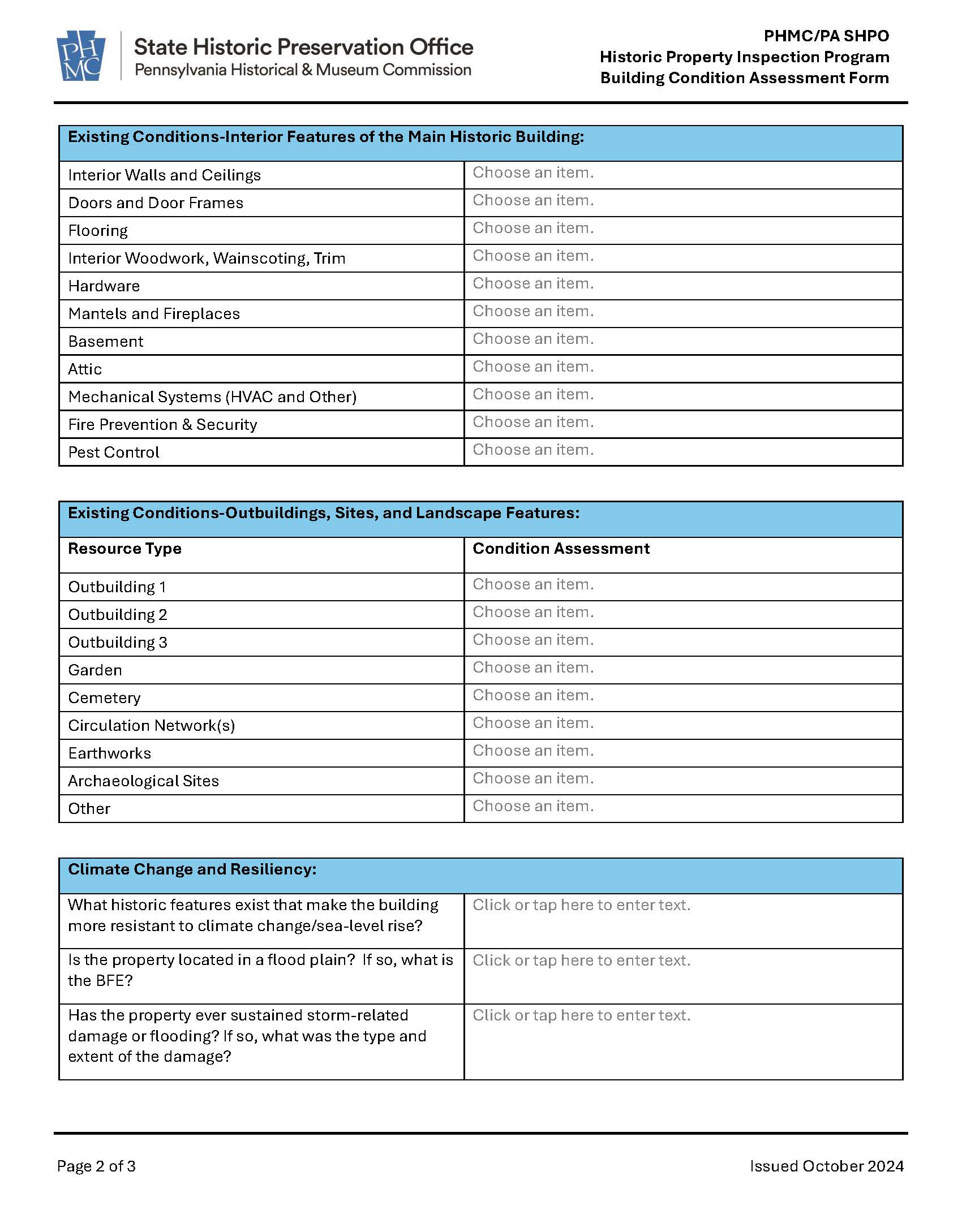
Second page of PA SHPO’s building condition assessment form.

Last page of PA SHPO’s building condition assessment form.
The condition of each feature of the property is assessed on a scale of “Poor”, “Fair”, “Good”, and “Excellent”. “Poor” – maintenance is required and involves a complete restoration; “Fair” – maintenance is recommended and requires more involved repairs; “Good” – monitoring is recommended and requires a minor repair; and “Excellent” – the architectural feature is intact with no visible damage and no work is needed.
Once we return from the site visit, we compile the field notes, site information, and photographs to generate the final Condition Assessment Form. Necessary guidance and recommendations are also prepared and included with the final form. A copy of the final document is shared with the property steward and is added to the covenant property file in PA-SHARE.
Lucky for us, our trip in the Fall of 2024 brought us to three historic sites that address and assess these various concerns and issues quite well.
The Bradford House
The Bradford House sits at the head of the Whiskey Rebellion’s historic interpretation. Home to David Bradford, an important actor in the Whiskey Rebellion, the house (constructed c.1788) stands in good repair and received a “Good” condition assessment.
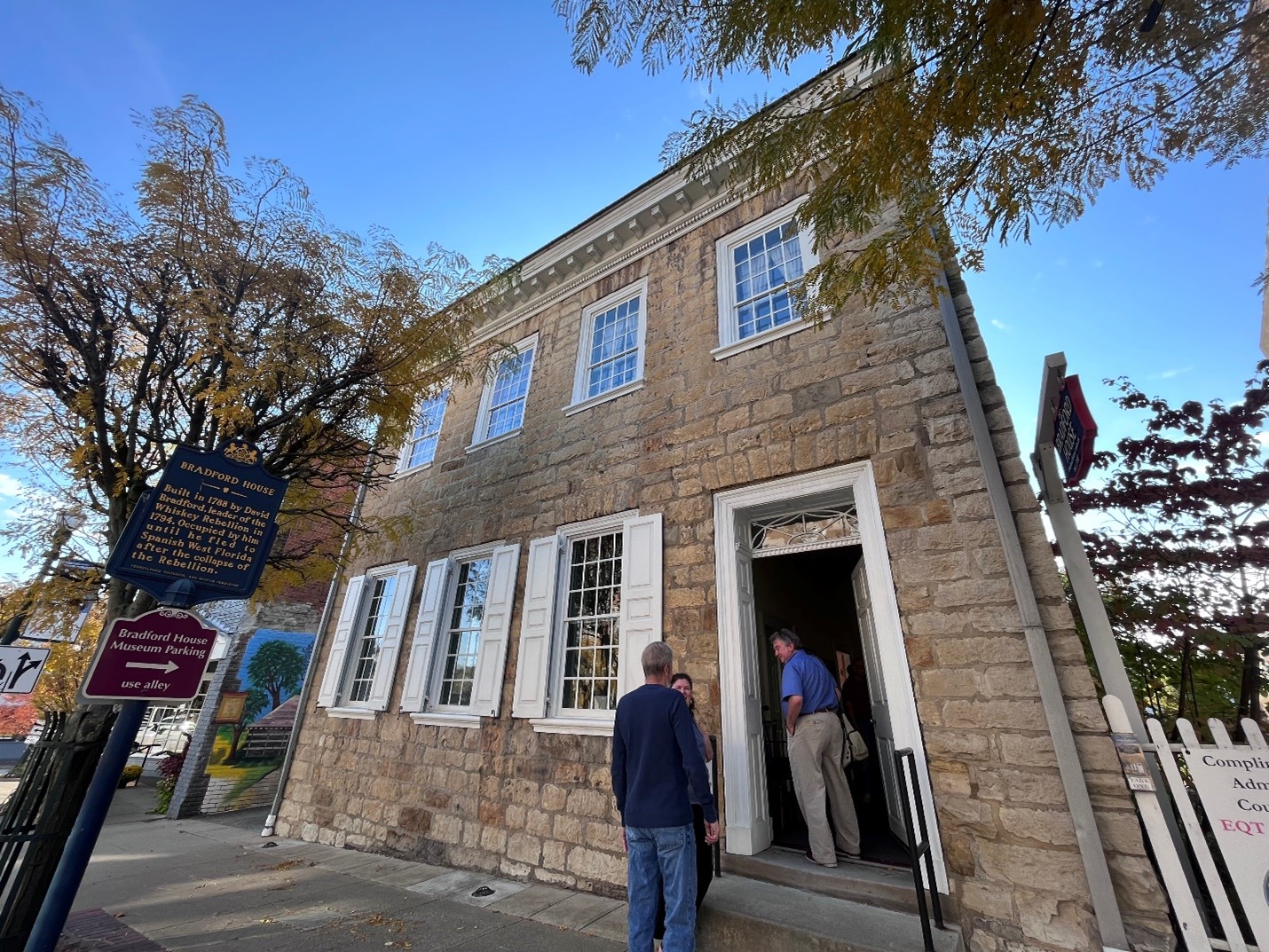
The Bradford House exterior with intact transom, wooden windows with wooden lintels and sills, stone masonry constructed exterior, and denticulated wooden cornice.
With only minor issues such as water intrusion from the exterior gutter system and some interior water stains, the house retains integrity reminiscent of the original nineteenth century building. The Bradford House Preservation Board’s work is guided by a current preservation plan, which includes a log of daily, weekly, monthly, and yearly preservation tasks and upkeep.
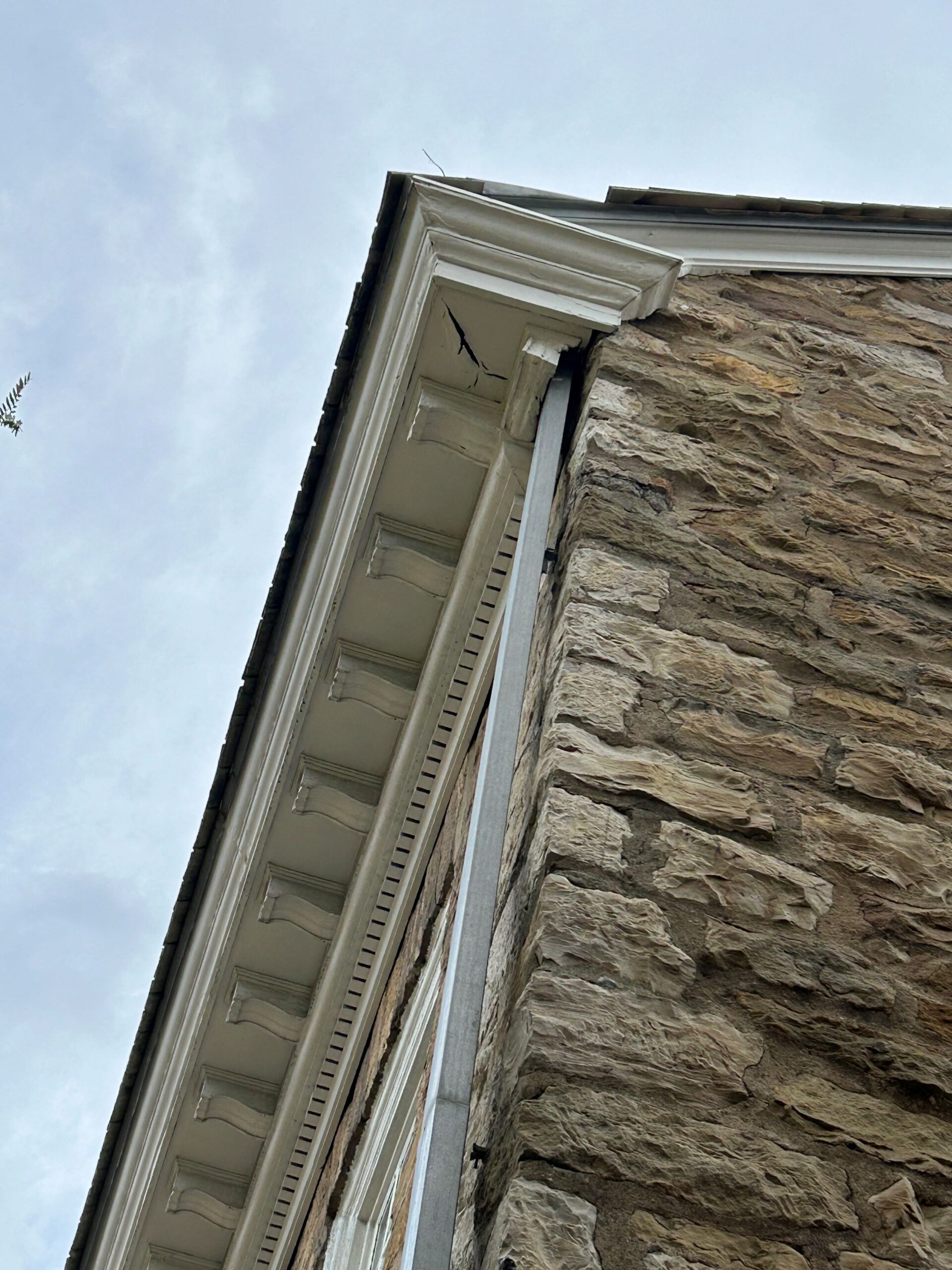
Evidence of some water damage underneath the cornice on the main façade.
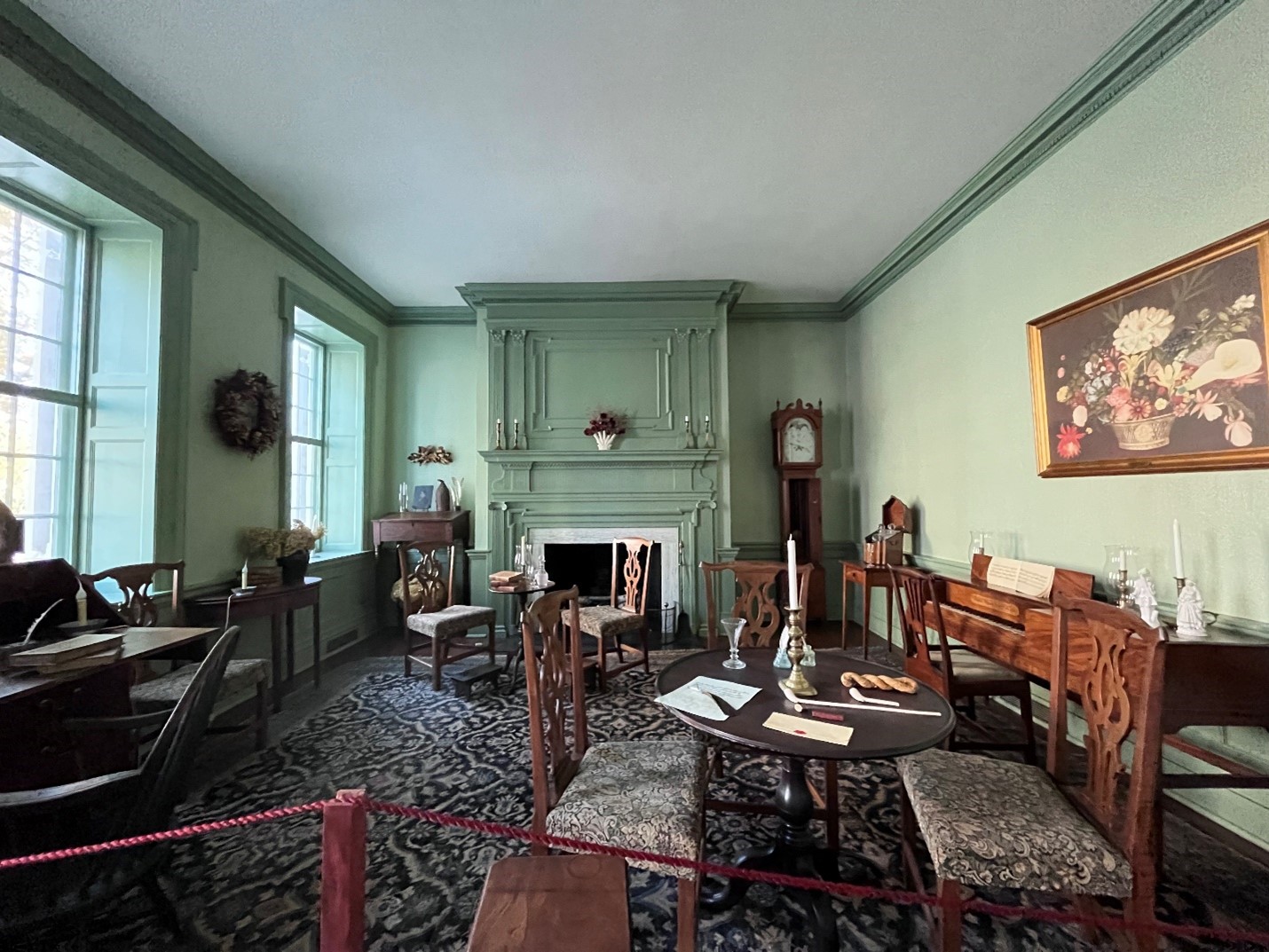
One of the period rooms interpreted in the Bradford House.
Carrie Furnaces
The Carrie Furnaces stand as one of the last remaining pre-World War II-era blast furnaces associated with steel production and the integration of smelting technology prevalent throughout Western PA, West Virginia, and parts of eastern Ohio.
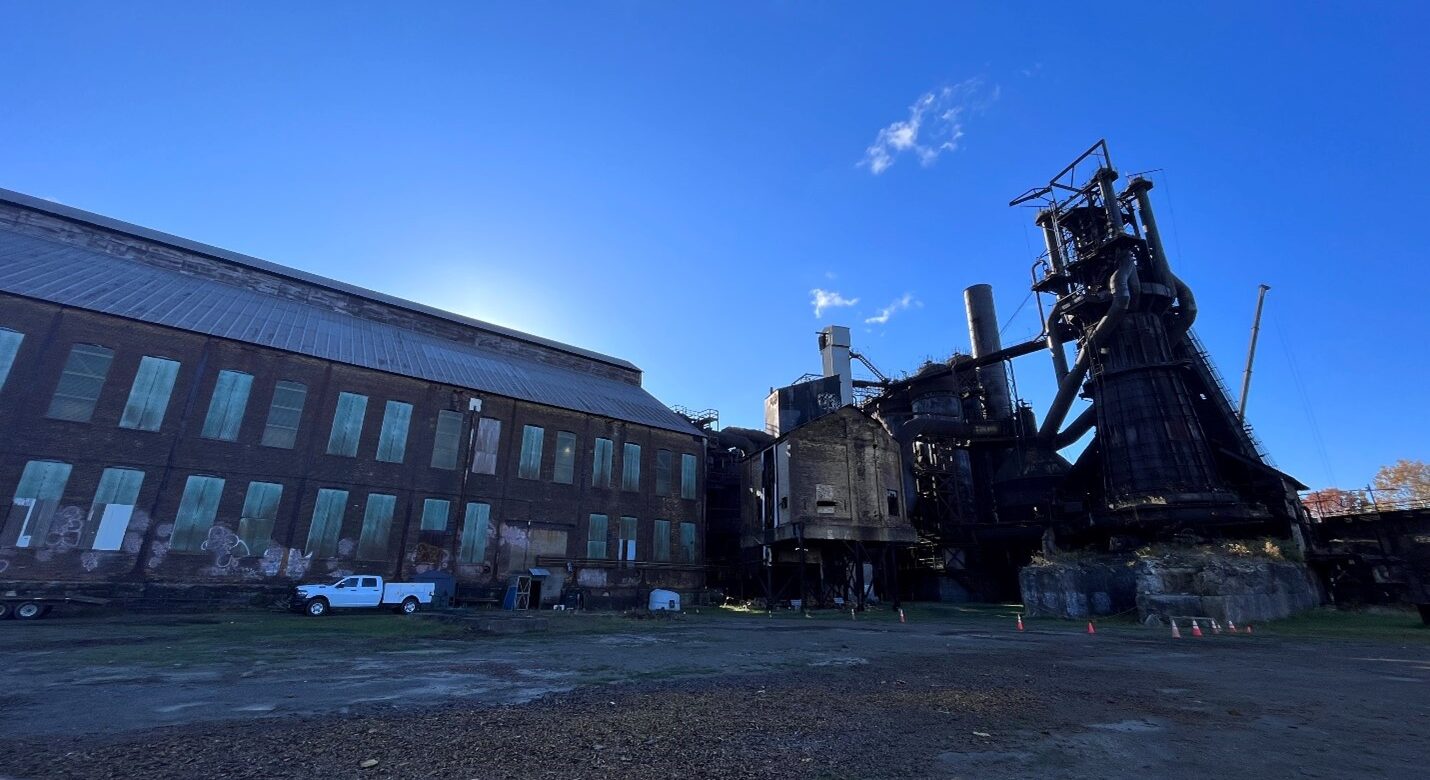
Carrie Furnaces’ Furnace / Cast House No. 7, Hoist House, Dust Catcher, and Hot Blast Stove features in the photo from left to right.
The stewards of Carrie Furnaces – the non-profit Rivers of Steel – maintain a highly active, engaged, and vibrant historic site. The staff is aggressive in procuring archival items and artifacts that further the interpretations of the Carrie Furnaces, blacksmithing, steel production, and steel workers in the Pittsburgh region. Blast furnaces number 6 and 7 stand today as the last remaining pieces used to interpret the history of steel production and labor in PA’s Western region.
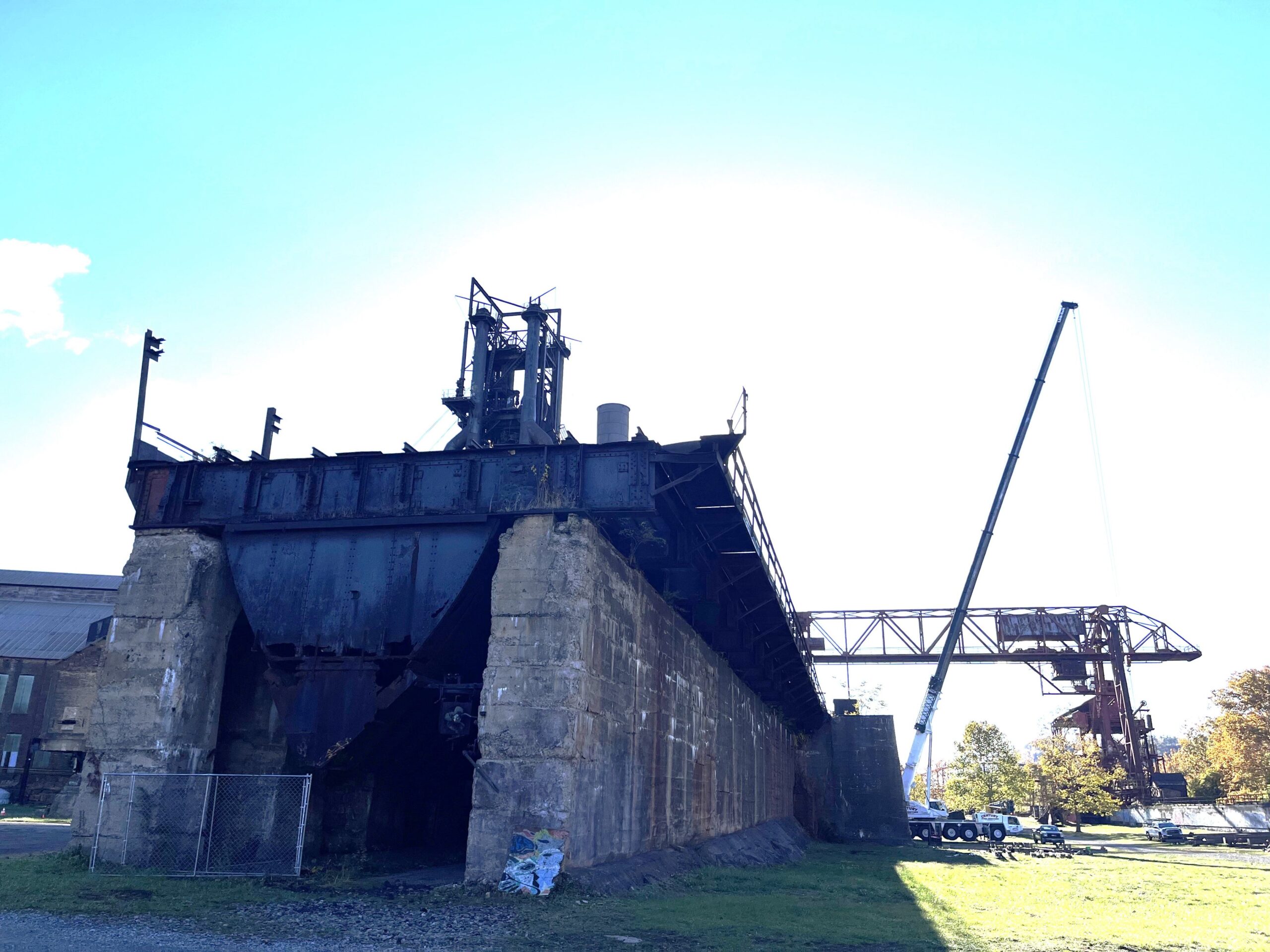
View south to the north end of the Trestle / Stock House structure. The Trestle and Stock House remain in fair condition and retain original brick, concrete, and stone masonry construction with the elevated concrete and steel constructed trestle with standard gauge rail tracks. The original brick, concrete, and stone masonry construction is featured on the bottom with the concrete and steel constructed trestle elevated on top of the masonry foundation. An entranceway is located in the middle of the structure for rail cars to pass through and provide necessary materials to the hot blast stove.
The site contains sixteen contributing resources associated with Blast Furnace 6 and 7. One of which, the Trestle / Stock House, was a focus of our site visit, as a rehabilitation project is currently underway on this structure.
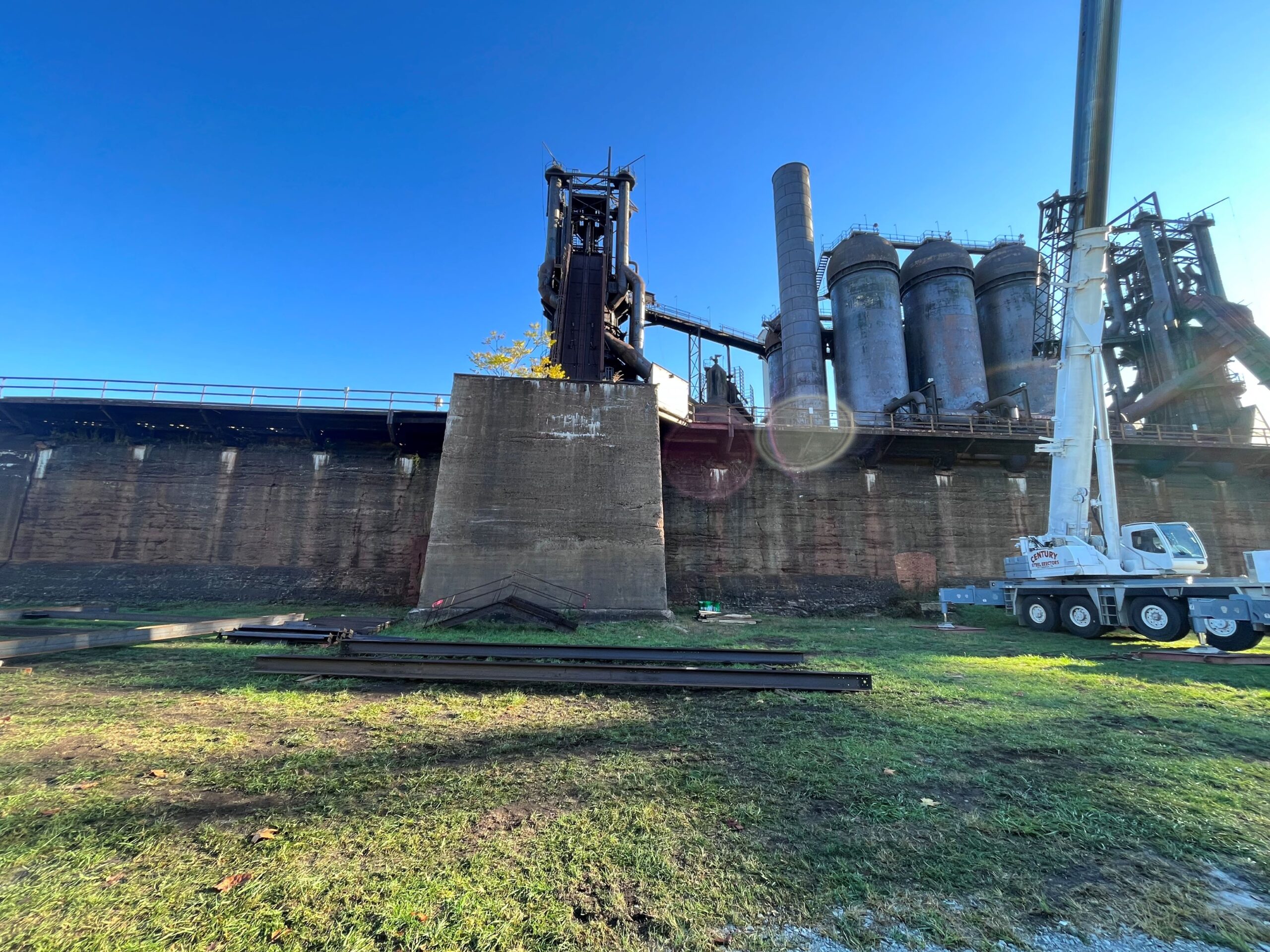
View east to the west side of the Trestle / Stock House structure. The photo provides a good view of the concrete masonry constructed walls and elevated trestle.
Combined, these extant resources present a rare example of 1920s material handling technology that further allow for the interpretation of early twentieth-century furnace stocking operations. Carrie Furnaces and all associated resources received an overall “Good” assessment.
The Children’s Museum of Pittsburgh
The Children’s Museum of Pittsburgh building stands as a superb example of Richardsonian Romanesque architecture. The exterior features granite and stone masonry walls with stone mullions, transoms, and archivolts above the ribbon windows. The exterior presents no immediate need for restoration and has excellent architectural integrity.
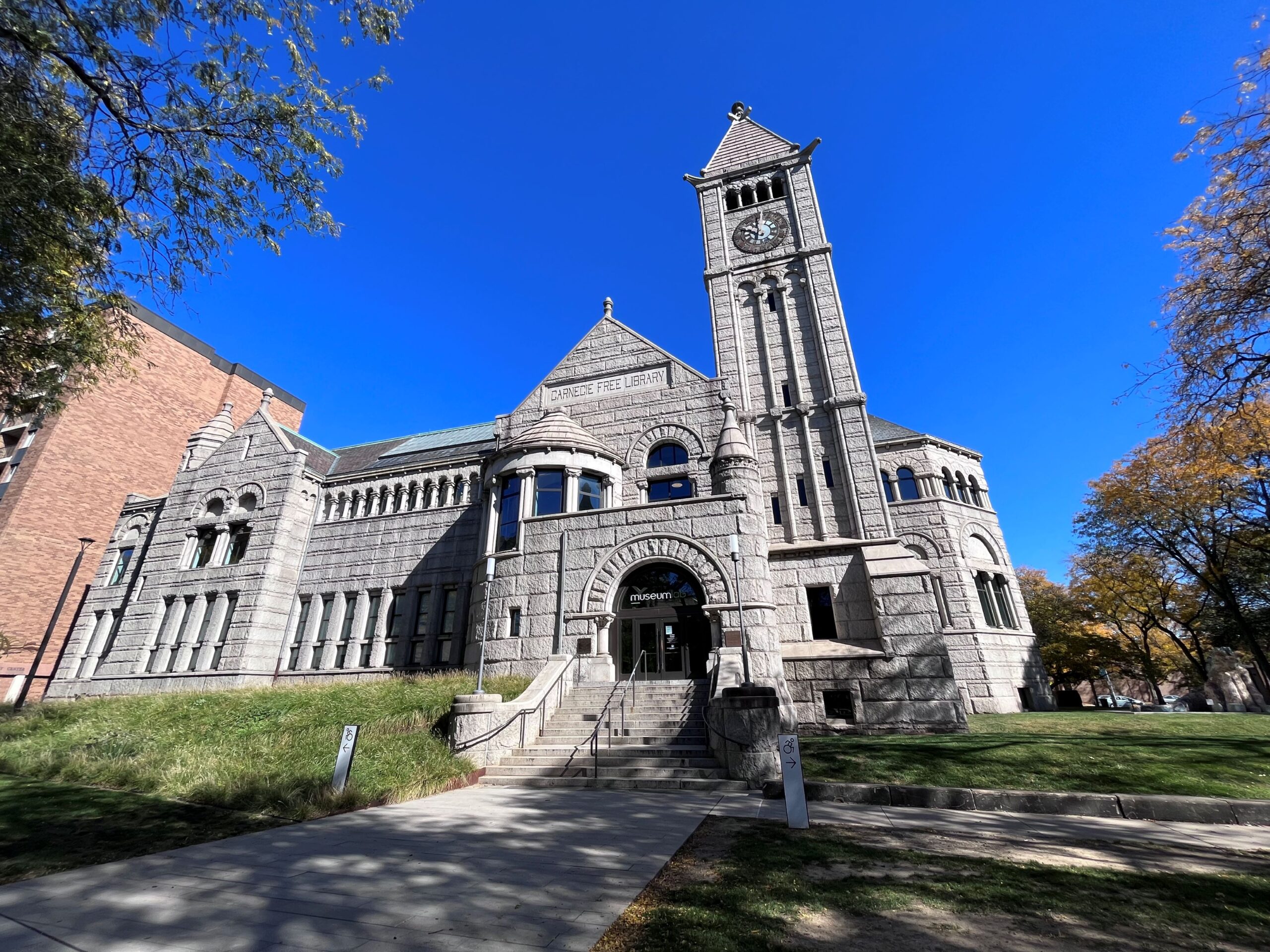
Main façade of the current New Hazlett Theatre, which is part of the Children’s Museum of Pittsburgh. Originally constructed as the Carnegie Library, the building continues to retain almost all of its architectural integrity and association with Richardsonian Romanesque architecture.
Upon gaining ownership of the property in the late twentieth-century, the museum stewards quickly uncovered the beauty within the Children’s Museum’s interior spaces, tearing down drop ceilings and ripping up carpets all to find an incredibly preserved historic architecture dating to the building’s inception in the late nineteenth century.
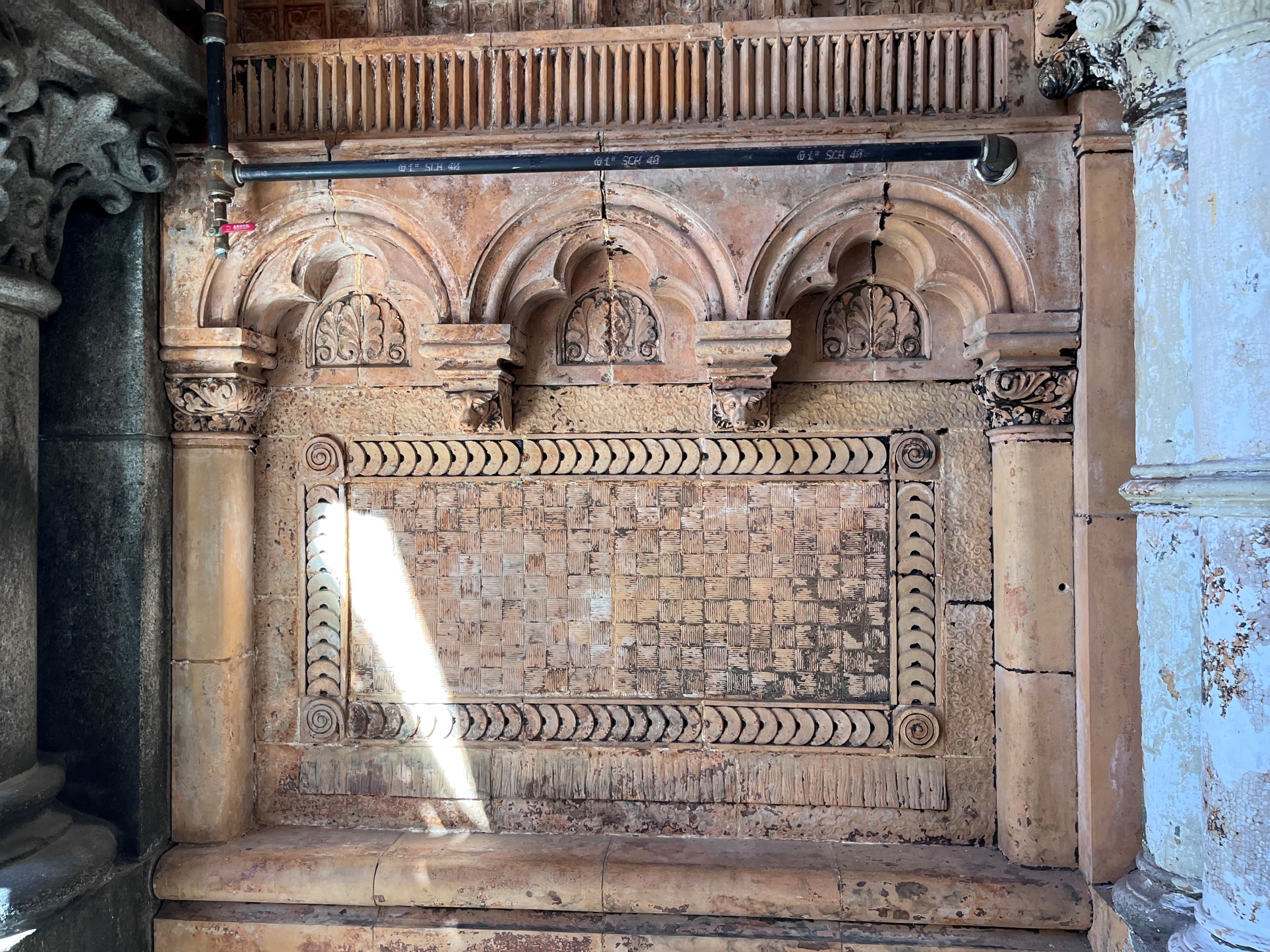
An interior of the Children’s Museum lobby that was once filled with gypsum-based drywall. The drywall was removed to reveal this original interior Richardsonian Romanesque ornamentation in the lobby.
The Museum continues to uphold its special role of educating and fostering creative development to Pittsburgh youth which is reflected in the interior spaces that feature intricate art installations which double as children’s play areas and educational spaces all set within the historic interior spaces. The Children’s Museum of Pittsburgh, and all associated resources, received an overall “Excellent” assessment.
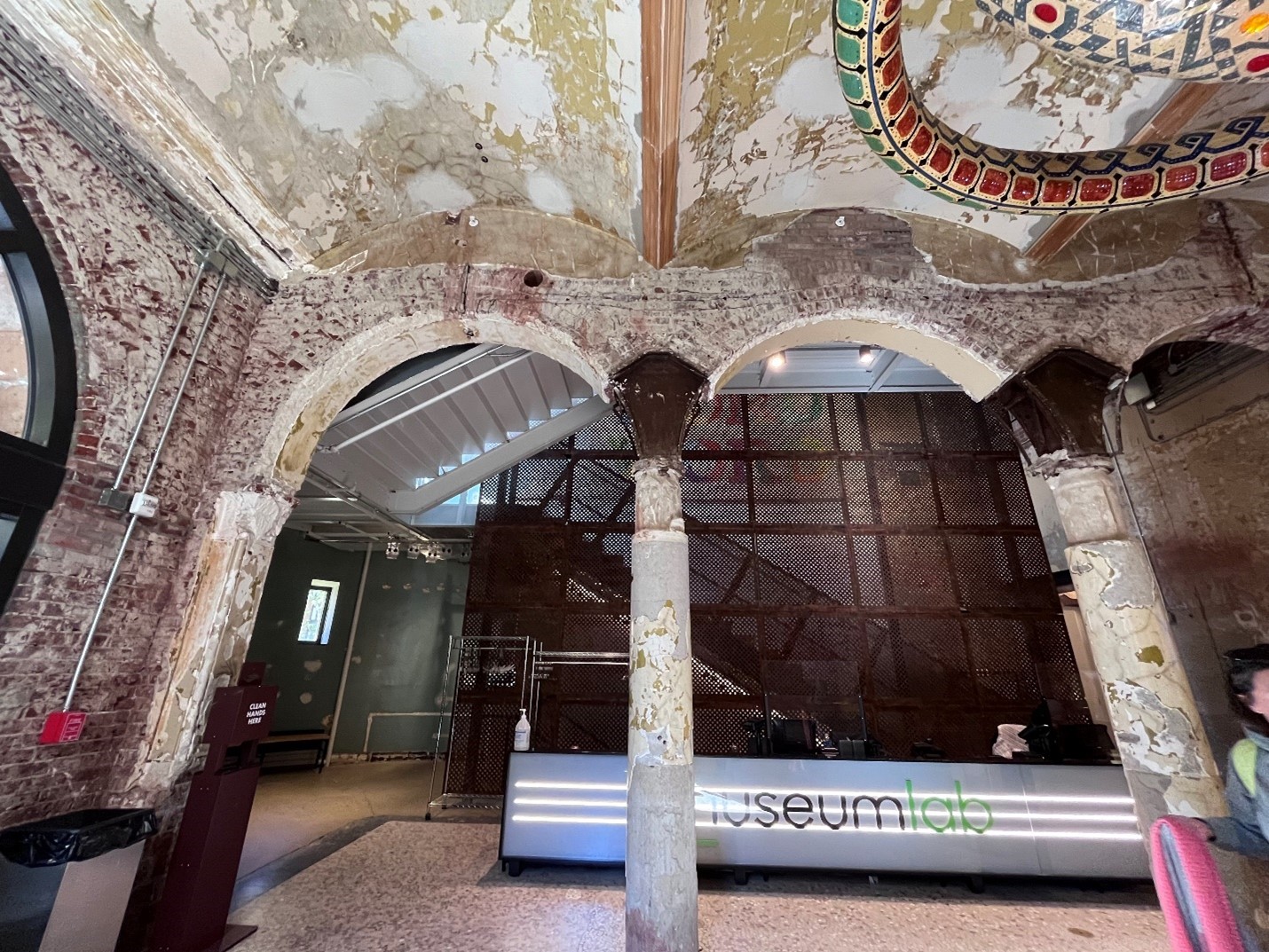
Continuing moving from the lobby into this main entrance space of the Children’s Museum, you can see the detail in the plaster ceiling, plaster columns, and brick walls that were also once obscured with drywall walls and acoustic tile dropped ceilings.
Closing Notes
We are pleased with the results of the first test run of the new Condition Assessment Form. This test run was not only beneficial to the HPIP but also allowed stewards of covenant properties the time show what advancements and new interpretive measures they are implementing at each site.
The HPIP is eager and excited to get back out on the road this summer and continue to meet and view the great stewards of various PA SHPO covenant properties.
Comment Policy
PHMC welcomes and encourages topic-related comments on this blog. PHMC reserves the right to remove comments that in PHMC’s discretion do not follow participation guidelines.
Commenters and Comments shall be related to the blog post topic and respectful of others who use this site.
Commenters and Comments shall not: use language that is offensive, inflammatory or provocative (this includes, but is not limited to, using profanity, obscene, or vulgar comments); disparage other commenters or people; condone illegal activity; identify the location of known or suspected archeological sites; post personal information in comments such as addresses, phone numbers, e-mail addresses or other contact details, which may relate to you or other individuals; impersonate or falsely claim to represent a person or an organization; make any commercial endorsement or promotion of any product, service or publication.
If you would like to comment on other topics not related to this blog post but related to PHMC, please fill out the PHMC Contact Us Form.
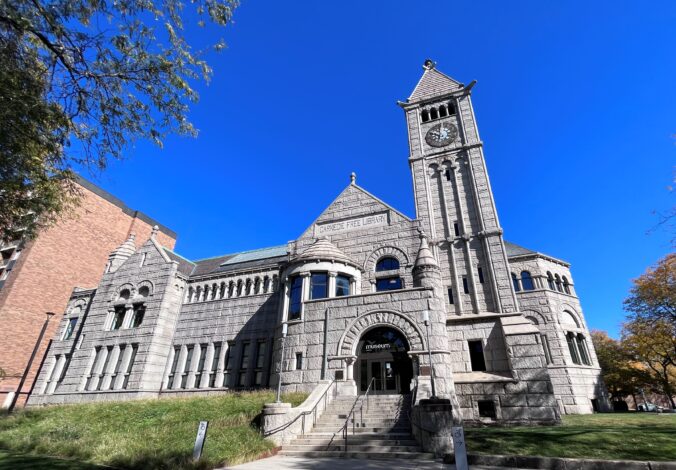
Leave a Reply